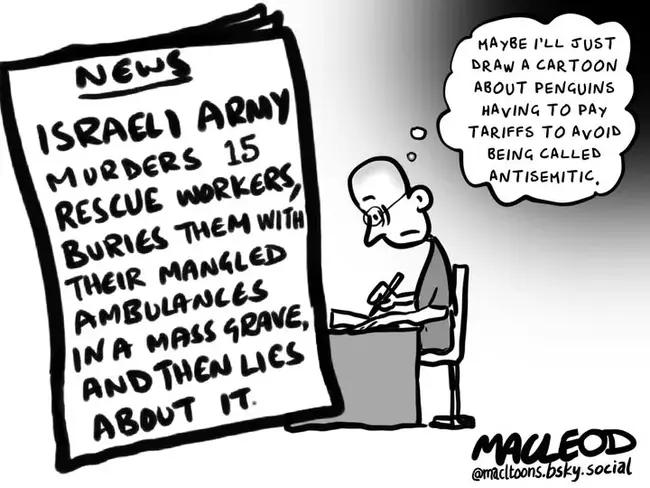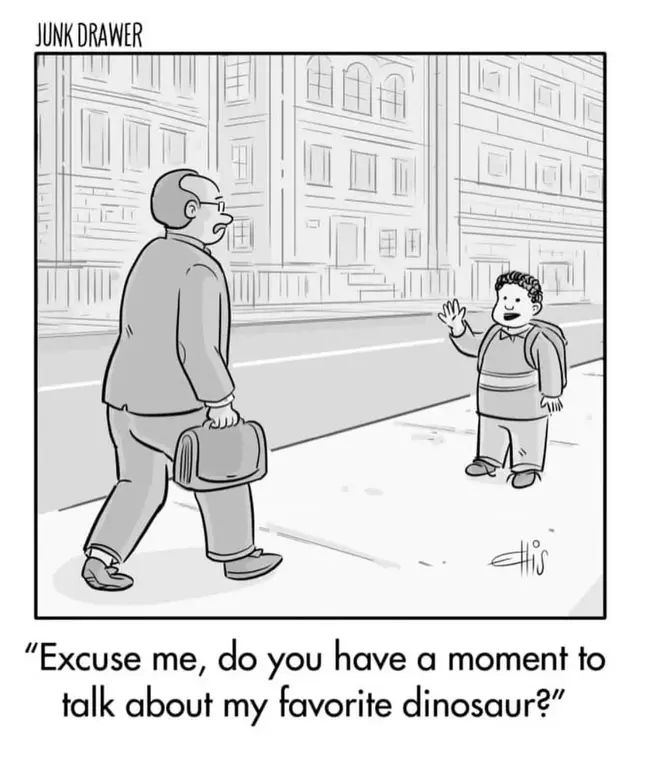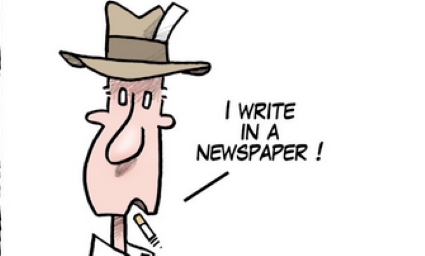CSotD: I’m Picking Up Bad Vibrations
Skip to commentsI’m going to set today’s sour mood by disagreeing with Dave Whamond. I understand his point and others have pointed out the keyboard warriors who declare themselves experts on the problem of the day, whatever it is.
The problem is that, other than drawing the fellow as buck-toothed and chinless, he doesn’t indicate that he is perpetually wrong, and there are all sorts of people who were right about Covid and are also right about tariffs.
It’s possible to know about more than one thing, and it’s also possible to do some research about a new topic. And Covid emerged somewhat like HIV, in which we all had to learn on the fly, such that what someone said on Monday could be inoperable by Thursday, not because they were stupid but because new facts had emerged.
It’s also, of course, possible to be a blockhead, and Heller frames the parallel between people who knew everything about Covid except the truth and people who know everything about tariffs except the truth.
It’s a much chattier cartoon than Whamond’s, not only with the dialogue between the two people but with the TV in the background doing the set-up. The best cartoons have no dialogue at all, but the point is to communicate and often that takes words as well as images.
Heller leaves a very large unanswered question despite all the words: Why is it that Trump loyalists are willing to accept high prices and potential unemployment now when they wouldn’t even wear a surgical mask back then?
But that’s where loyalty comes in, and unless someone nearly died of Covid or finds themself laid off and burning through their savings today, they’ll cling to loyalty, and they may find excuses and exceptions even if they are personally impacted.
Loyalty can be more persuasive than logic, which is our theme of the day, and is seen in this
Juxtaposition of the Day
Pett makes a bit of a leap here, because the two kids at the center of his cartoon appear white-American and we haven’t started locking up citizens yet. On the hand, if they seemed like immigrants, it might make the cartoon more centered on the immigration/xenophobia issue and not the matter of fear, which is more sweeping and compelling, and fits into the “repeat that into my umbrella” factor.
I know people my age who, as kids, worried about atomic warfare, though I just lumped it in with other bad things that might happen but were beyond my power to affect.
We’ve made that list considerably longer and more immediate for our grandkids, and as a for-instance, we just had a family snatched in Sackets Harbor, a town that is like the northern equivalent of Mayberry.
Fortunately, the town rose up and the family was released, but if I were a kid today, I don’t know that I could see school shootings and ICE raids as being as unlikely as nuclear war.
As for speaking into the umbrella, abductions can follow an innocent remark, and it’s not so much a matter of who you can trust but how dumb luck can factor in.
However, there is genuine hostility out there, and Beckom sneers at a judge for finding that an innocent man was deprived of due process, insisting rather that ICE never makes mistakes, that even soccer coaches and college kids deserve to be sent to Salvadoran hell-holes for the crime of being different, and that we don’t need due process as long as we can tell the troublemakers from the people who belong here.
Which we will decide ourselves without some liberal DEI judge going all constitutional on us.
One measure of character is whether you’re scared that it might happen to you or whether you feel it’s already happening to all of us.
Juxtaposition of the Day #2
One of the hardest challenges I found as a journalist was to be in an interview where you realized that the person was lying to your face. Fortunately, I could usually work around a self-serving falsehood by finding a second, more forthcoming source or, if it were an insignificant sidenote, ignoring it for the moment.
But as Wilcox, Cook and MacLeod note the changing explanations and downright fables being put forth by the IDF are highly significant and are part of a particularly toxic, repeated pattern that goes back at least to the murder of journalist Shireen Abu Akleh, whose death was explained away, then edited and explained again, then finally excused with a “whoops.”
And the mother and daughter killed by a sniper while walking in the courtyard of a Christian church.
And the tiny girl who pleaded for help while the medics trying to rescue her were killed, and who was then killed herself.
And now this, and, as Wilcox and Cook note, the explanations have once more fallen apart. Turns out one of the wounded, dying medics left behind a recording that overturned the IDF’s version of events.
But as MacLeod notes, cartoonists and other commentators have become wary because any criticism of the IDF or of government policies towards Gaza is attacked as antisemitism.
However, you can still draw funny penguins without being accused of being antiornithological.
You don’t even have to draw them yourself, and, as Sluka suggests, not only is it cheaper to simply copy other people’s artwork, but you’ll find plenty of customers who like to save money and can’t tell the difference anyway.

Ellis Rosen found that a good idea can readily be stolen and repurposed, though this theft apparently appeared on a Leica Facebook fan page, rather than in an actual ad for the camera.
It seems inevitable that there are nitwits who think they can pass along cartoons as long as they snip off the signature and copyright, but AI offers a much higher level of nitwittery, giving them the power to steal the work entirely and to take credit for it.
When we all know that, to steal someone else’s artwork, you are supposed to get a booth at a comics convention and do the work by hand.
Bad, bad, bad, bad vibrations. Ah well. Happy 04/09:











Comments 13